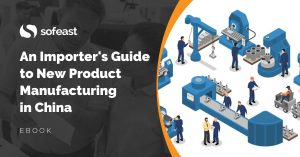John Teel from Predictable Designs (a great resource for hardware startups, with a focus on electronic design & engineering) just launched his podcast, and I thought the third episode was quite interesting.
The interviewee was Dave Millman of BizDev Global, a company that helps B2B tech startups find their first customers. Here is a summary of what he shared.
1. Not talking to potential customers and validating the product idea before development
Technical founders are often uncomfortable going out and talking to people. They have an idea in their mind, they visualize what they think the market will want to buy, and they spend all their time making their vision a reality.
They should also talk to people who currently buy the type of product they are designing & developing. Otherwise, their plan might fail miserably when the ‘moment of truth’ comes up and target customers are not interested.
A co-founder focused on marketing & sales helps a lot. As an aside, investors pay particular attention to how ‘customer-centric’ the founders are. It cuts a lot of risk in the project.
2. Not seeking early customer partners
It is never too early to talk about an idea to potential customers, and start having regular conversations with them.
Tapping into early enthusiasts, listening to them, giving them interesting information, will allow learning as much as possible about their needs and challenges. It will make for a better product.
It can also lead to 1 or 2 reference customers. Their names will open many doors, including getting the attention and interest of some of the best manufacturers.
3. The founder(s) not getting involved in sales
Don’t even think of outsourcing sales at the beginning. Going out and getting direct feedback from target customers is the best way to know what they will and will not buy, what price point makes sense, what their real desires and challenges are, and so on.
The learning is more important than the economic benefits at the very beginning.
4. Assuming customers will change their behavior to use your product
Big companies can afford to try that, but it is a very risky idea for startups.
For example, smart wearables such as health monitoring watches see a rate of 1% a day drop-off in usage, despite a very clear value. The hassle of recharging the watch every night and putting it back on the wrist in the morning should not be underestimated.
A startup that ignores this fact and bets users will keep wearing their smartwatches, and buy the next version after 2-3 years, will be in for a serious disappointment.
5. Not asking customers what to do next
Some startups form their own opinion of what they can sell their customers, and sometimes it doesn’t correspond to what they will actually want to buy. Here are two examples:
- Evernote steered away from their original value proposition and confused their users, as analyzed here.
- The Apple II was a success, but Apple stopped listening to customers and the Apple III was a failure.
All this is great advice. I’d guess it applies equally to hardware and software startups.
*****
What would you add to this list? Collecting sales (to retailers, through Kickstarter…) too early with an immature product that will need to be redesigned? Trying to please all potential customers rather than targeting one niche at the beginning?
Are you designing, or developing a new product that will be manufactured in China?
Sofeast has created An Importer’s Guide to New Product Manufacturing in China for entrepreneurs, hardware startups, and SMEs which gives you advance warning about the 3 most common pitfalls that can catch you out, and the best practices that the ‘large companies’ follow that YOU can adopt for a successful project.
It includes:
- The 3 deadly mistakes that will hurt your ability to manufacture a new product in China effectively
- Assessing if you’re China-ready
- How to define an informed strategy and a realistic plan
- How to structure your supply chain on a solid foundation
- How to set the right expectations from the start
- How to get the design and engineering right
Just hit the button below to get your copy (please note, this will direct you to my company Sofeast.com):


